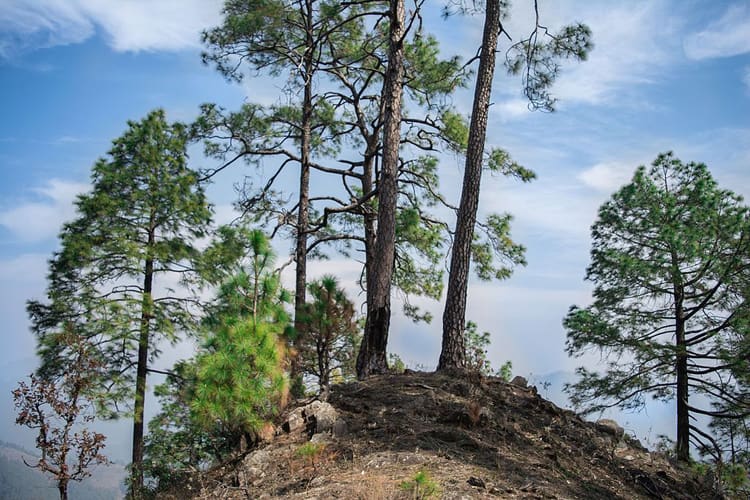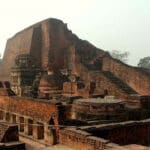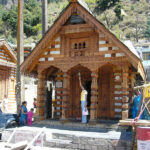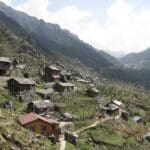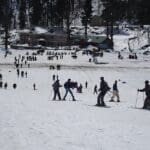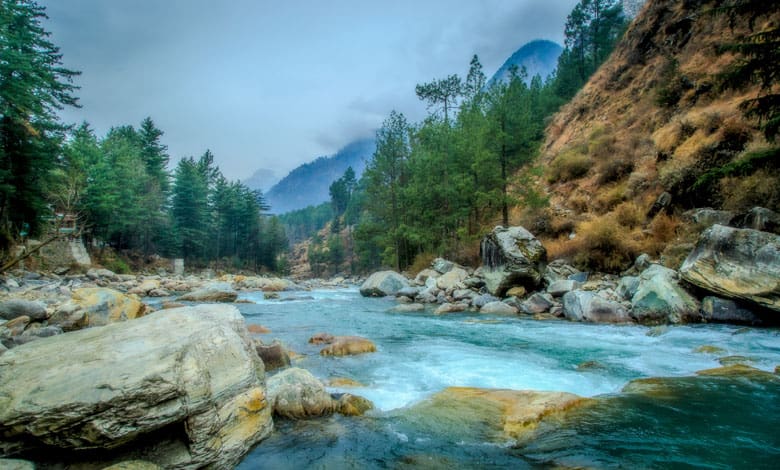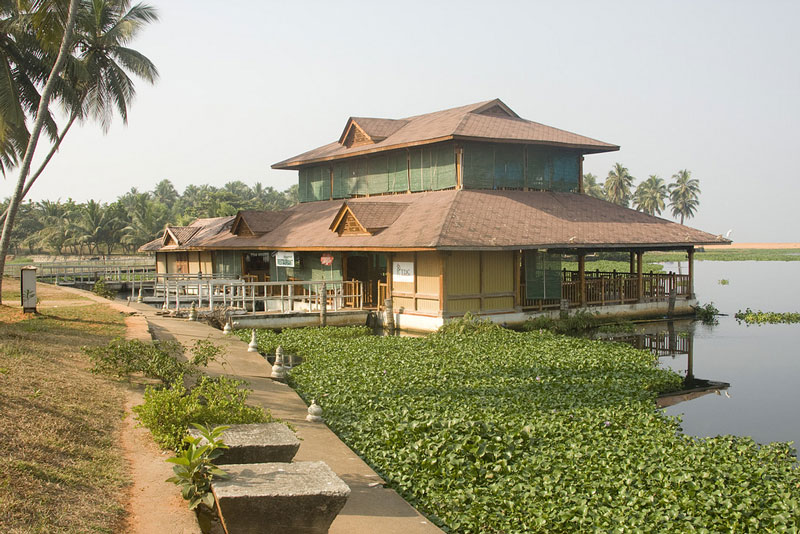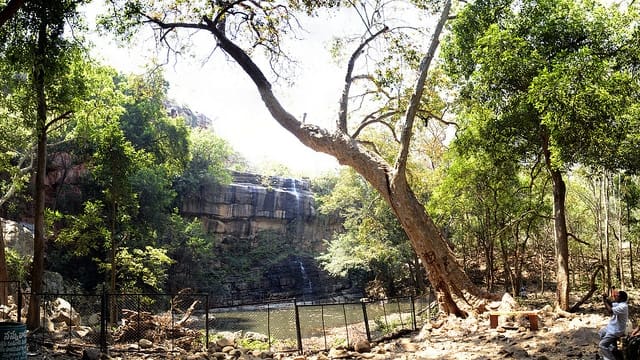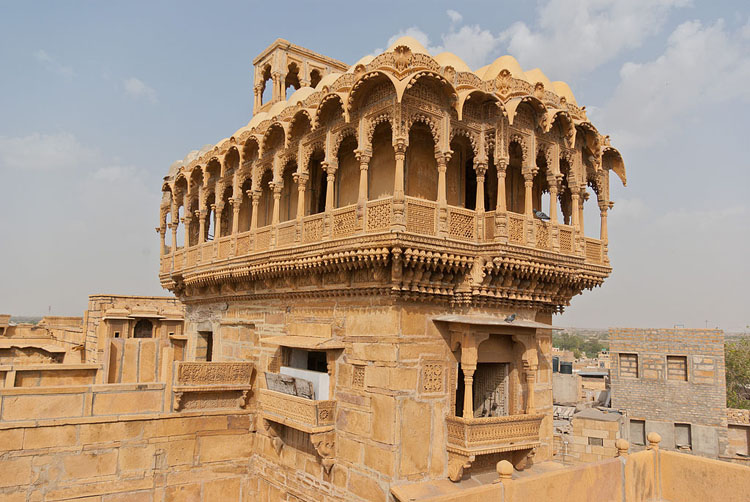Enveloped in the misty folds of the Kumaon Himalayas, Binsar Wildlife Sanctuary, Almora is more than just a protected forest; it is a living tapestry where ancient history, vibrant biodiversity, and local culture converge. Stretching over 47 square kilometers, Binsar is one of the last refuges for Himalayan oak, a hotspot for rare wildlife, and a serene haven from which the snow-clad majesty of Nanda Devi and Trishul can be fully admired.
Historical and Cultural Dimensions
Origins and Mythological Links
The roots of Binsar plunge deep into Uttarakhand’s ancient past. Once called ‘Veneswar’ (the abode of Shiva), local legends abound with tales of wandering holy men, mysterious jungle deities like Dana Golu, and the mystical powers of the Binsar Mahadev Temple. The sanctuary is believed to be imbued with mythical energy, where every grove and glade tells a spiritual story.
Chand Dynasty to Colonial Era
From the 7th century until the 18th, the forested ridges of Binsar served as a summer retreat for the Chand Dynasty. The strategically high vantage points offered natural security, panoramic Himalayan views, and cool climate relief. Later, British officers, lured by the climate and tranquility, built summer homes and forest bungalows, many of which exist today with a timeless colonial aura.
Geography and Unique Topography
Dramatic Altitude Range
Ranging from 900m to 2,500m, Binsar’s terrain comprises undulating valleys, precipitous slopes, and wide ridges. Each rise in elevation brings new ecological niches—dense oak forests on the heights, chir pine slopes lower down, and lush patches of rhododendron, bamboo, and wildflowers that flourish with seasonal rains.
Zero Point and Iconic Vistas
At Zero Point (the highest point at 2,420m), awe-inspiring Himalayan views unfold with razor clarity: Nanda Devi, Trishul, Nanda Kot, Kedarnath, Panchachuli—all loom large on the horizon. Zero Point is legendary for sunrise and sunset, when snow peaks blush pink and golden against a crystalline sky.
Floral Biodiversity: The Heart of Binsar’s Ecosystem
Forests: Oak, Rhododendron, and Pine
The sanctuary is a sanctuary primarily established to preserve broadleaf Himalayan oak (Quercus leucotrichophora). These forests form the keystone of Binsar’s ecology, supporting rare orchids, ferns, and lichens. Rhododendron arboreum, or buransh, festoons hillsides with vivid red blossoms every spring. Intermixed are chir pine, cedar, and patches of bamboo, each layer teeming with specialty plants, fungi, and medicinal herbs.
Seasonal Bloom and Botanic Treasures
-
Spring (March-April): Forests carpeted in rhododendron and wildflowers.
-
Monsoon (July-September): Ferns, mosses, and mushrooms emerge, painting the undergrowth green.
-
Autumn: Oak and chestnut shed golden leaves, and meadows bloom with asters.
Medicinal plants such as kutki, tejpat, and amla abound, still used in local herbal remedies.
Faunal Diversity: Inhabitants of Binsar
Mammals: Predators and Prey
-
Leopard (Panthera pardus): Apex predator, often seen at dawn or dusk.
-
Himalayan Goral and Musk Deer: Agile cliff-dwellers, vital for forest balance.
-
Sambar, Barking Deer, and Chital: Common grazers.
-
Sumatran Serow, Wild Boar, Jungle Cat: Elusive, best spotted on quiet walks.
-
Pine Marten, Red Fox, Langur, Rhesus Macaque: Regularly observed in woodlands.
Occasionally reported—Himalayan black bear and leopard cat, testifying to the sanctuary’s relatively undisturbed environment.
Birdlife: Crown Jewel of Binsar
Recognized internationally as an Important Bird Area, Binsar hosts 200+ bird species:
-
Himalayan Monal, Koklass Pheasant, Kalij Pheasant: Icons of Uttarakhand’s avian diversity.
-
Flycatchers, Laughingthrushes, Nuthatches, Parakeets, Magpies, Jays: Each niche chirps with a different species.
-
Woodpeckers, Sunbirds, Thrushes, Eagles, Warblers, Forktails: Rare sightings reward patient birdwatchers.
Spring migration turns Binsar into a birdwatcher’s dream, as verditer flycatchers, warblers, and thrushes pass through.
Invertebrates, Reptiles, and Butterflies
From the ground up, life abounds: diversity of moths and butterflies (including the rare Paris peacock), snakes, skinks, and lizards. The forest floor is alive with beetles and pollinators—testament to well-preserved habitats.
The Human Dimension: Villages and Spiritual Sites
Indigenous Kumaoni Communities
Several small villages encircle the sanctuary. The traditional Kumaoni lifestyle—terraced farming, ancient stone homes, folk music—is vibrant here. Locals play a vital role in conservation, acting as guides, porters, and keepers of ancient lore.
Temples and Sacred Spots
-
Binsar Mahadev Temple: Crafted in deodar wood, enshrined with centuries of faith.
-
Dana Golu Devta: Local deity, guardian of the forest.
-
Nearby: Jageshwar Dham, Kasar Devi, and ancient cave shrines unite history with spirituality.
Adventure and Eco-Tourism Activities
Trekking and Hiking Routes
Over 60 kilometers of maintained trails reveal every aspect of Binsar’s forests:
-
Zero Point Trek: 2 km from main rest house, with panoramic vistas.
-
Gairar Trek (new circuit): Explores remote glades and village belts.
-
Jhandi Dhar Trail, Mary Budden Trail: Offer both challenging and beginner-friendly walks.
Guided treks are recommended for wildlife encounters, safety, and richer experiences.
Jungle Safari and Night Walks
Permits allow vehicular safaris into core forest zones at specified timings. Night walks (on foot, with trained naturalists) reveal nocturnal wonders—from leopards on prowl to shy civets and the echoing calls of Himalayan owls.
Camping and Forest Lodges
Sanctioned campsites and eco-lodges, such as the KMVN Rest House, Binsar Forest Retreat, and luxury heritage estates, are available. Forest rest houses offer a colonial touch and direct access to dawn wildlife viewing.
Birdwatching Tours
Select resorts offer customized birding packages with expert guides, early morning forest walks, and logbooks for enthusiasts.
Cultural Engagements
Guests may participate in village tours, local market visits, or traditional Kumaoni cooking classes. Ethnic music evenings and temple festivals enrich the Binsar experience.
Practical Information
How to Reach
-
By Air: Pantnagar Airport, 140 km away; taxi services to Binsar.
-
By Rail: Kathgodam, 105 km, connects nationwide; cabs and buses readily available.
-
By Road: Accessible year-round via Almora (33 km), Nainital (90 km); well-connected by regional buses and taxis.
Entry Fees and Timings
-
Entry: INR 150/adult, INR 600/vehicle (subject to periodic revision).
-
Timings: 9:00 AM to 7:30 PM; entry subject to daylight hours for safety.
-
Permits: Purchase at main gate; keep ID handy.
Best Time to Visit
-
Spring (Mar–Apr): Rhododendron blossoms, best birdwatching.
-
Summer (May–June): Pleasant, ideal for families.
-
Autumn (Oct–Nov): Mountain views, cool weather.
-
Winter (Dec–Feb): Brisk air, occasional snow at higher elevations.
-
Monsoon (Jul–Sep): Lushest, but risk of landslides and leeches.
Accommodations: Choosing Where to Stay
Inside Sanctuary
-
KMVN Tourist Rest House: Classic forest setting, basic facilities.
-
Tree of Life Grand Oak Manor, Mary Budden Estate: Heritage luxury, period decor, panoramic views.
-
Binsar Forest Retreat: Organic food, guided walks, birding.
Periphery/Outside Sanctuary
-
Homestays in Dhaulchhina, Kasar Devi, and Almora: Authentic Kumaoni hospitality.
-
Mid-luxury Resorts: Modern amenities with forest access.
Advance bookings are essential, especially for forest houses.
Nearby Destinations
-
Almora: Hill station, bazaars, handicrafts, and cuisine.
-
Jageshwar: 9th-century stone temples in cedar forests.
-
Kasar Devi: Hippie history, panoramic ridge walks.
-
Kosi and Suyal Rivers: For picnic, angling, and meditation.
Conservation and Sustainability
Preservation Ethic
Amid rising tourism, Binsar enforces strict conservation:
-
Plastic and loudspeakers are banned.
-
Vehicles restricted to entry roads.
-
Eco-lodges use solar power, organic produce, and water-efficient gardening.
-
Locals engage as community wildlife stewards.
Tourism here provides income for villages, motivates preservation, and funds forest guard patrols.
Travel Tips: Maximizing Your Experience
-
Bring layers: Weather shifts quickly at altitude.
-
Carry essentials: Medicines, light snacks, reusable water bottles.
-
Binoculars and camera: For birding and landscape shots.
-
Tour with a guide: Increases sightings, cultural understanding.
-
Respect Privacy: Always ask before photographing locals.
-
Limited ATM/Network: Withdraw cash in Almora; phone network patchy.
-
Permits and Timings: Respect sanctuary rules and opening hours.
Binsar Wildlife Sanctuary, Almora: Why Visit?
From meditative tranquility to adventure trekking, spiritual heritage to scientific curiosity, Binsar Wildlife Sanctuary, Almora invites exploration in every season. Its biodiversity, scenic viewpoints, trekking routes, and deep-rooted culture offer rare, immersive connections to the Himalayas—making it one of India’s most treasured wildlife destinations.
Frequently Asked Questions (FAQs) about Binsar Wildlife Sanctuary, Almora
-
What unique wildlife can Binsar boast?
-
The sanctuary is home to leopards, Himalayan gorals, barking deer, porcupines, wild boar, red foxes, and more than 200 species of birds.
-
-
Is it safe to trek solo in Binsar?
-
While many trails are well-marked, hiring a local guide is recommended for safety and to enhance your experience.
-
-
Are there any specific birdwatching months?
-
Spring (March–April) and autumn (October–November) are peak seasons for migratory bird sightings.
-
-
Do accommodations inside the sanctuary offer modern amenities?
-
Most forest lodges and eco-resorts offer power, hot water, and meals, but Wi-Fi and mobile access may be limited.
-
-
How long should I stay to explore thoroughly?
-
Ideally, 2–3 days for treks, safaris, relaxation, and visits to local temples and villages.
-
-
Are night safaris allowed?
-
Night walks are possible with official permission and guides; unsupervised forest access after dark is prohibited.
-
-
Is food easily available in and around the sanctuary?
-
In-house restaurants at lodges provide local and continental cuisine, but carry basics if on full-day hikes.
-
-
What is the entry fee structure for children or students?
-
Discounted rates are typically available; carry ID cards for verification.
-
-
Can private vehicles go inside the core forests?
-
Only up to designated parking; the rest is explored by foot or authorized vehicles.
-
-
How is the weather in peak summer?
-
Pleasant during the day (18–25°C), cool at night; light woolens recommended.
-
-
What clothes should I pack?
-
Layered clothing, rain gear (monsoon), hiking boots, and woolens (winter).
-
-
Are there licensed guides for nature walks?
-
Registered guides are available at the sanctuary gate and through resorts.
-
-
Can foreign tourists easily get permits?
-
Yes, by showing a passport at the entry gate.
-
-
Are there health facilities nearby?
-
Basic first aid at resorts; nearest hospital is Almora (33 km).
-
-
Is group camping permitted?
-
With Forest Department approval; arrange in advance with registered operators.
-


